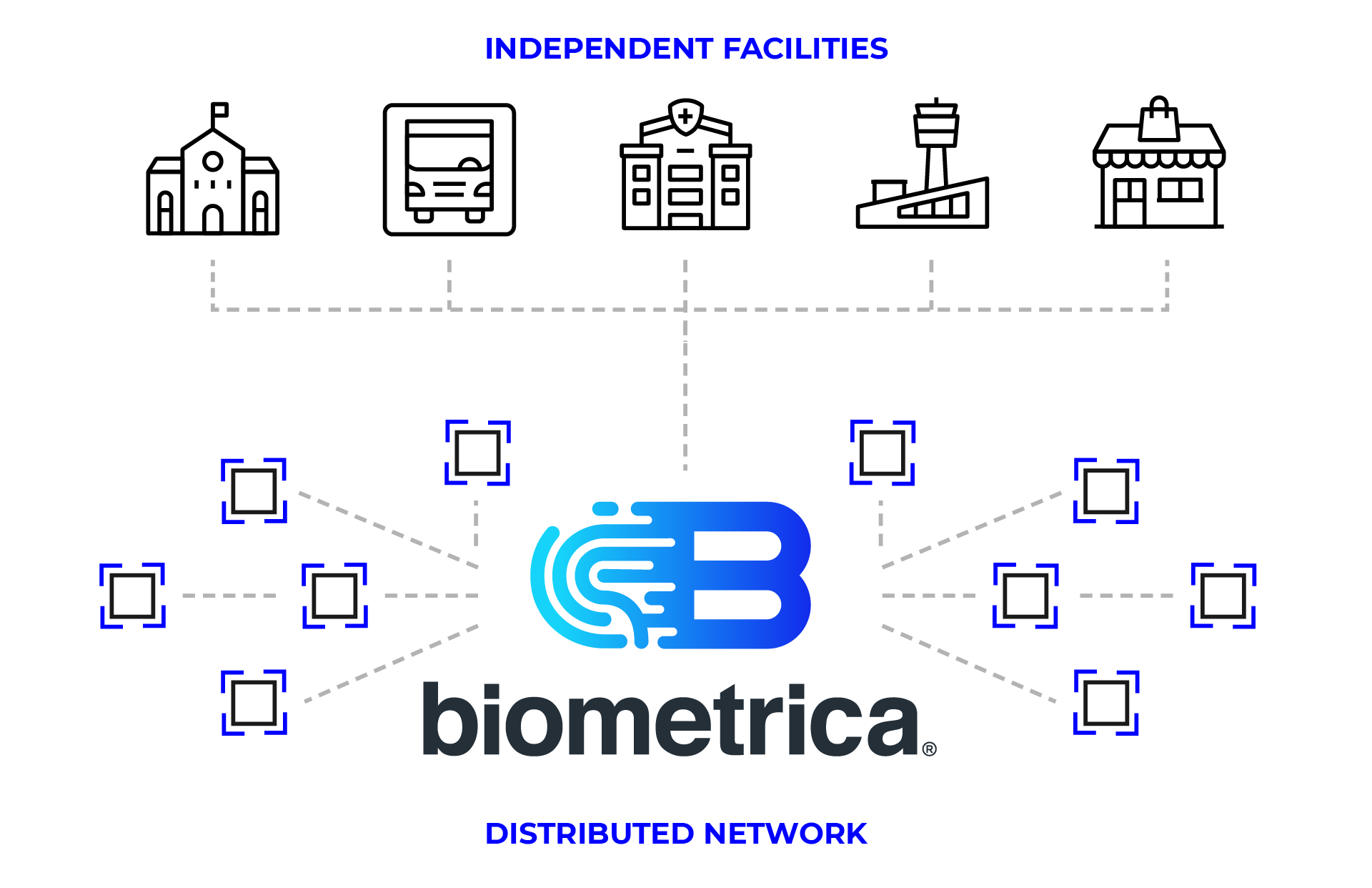The Power of A Collaborative Community
What is a Public-Private Partnership (PPP) for Public Safety?
Biometrica's approach to PPP is simple but powerful — communities are stronger together.
When hotels, schools, airports, retail centers, hospitals, and other organizations voluntarily participate in a PPP, they create a collaborative safety network — without compromising anyone's privacy or First Amendment Rights.
This isn't mass surveillance. No one is watching everyone. Instead, each facility operates its own system, receives alerts only when legally permissible and relevant threats or missing persons are detected, and supports a broader effort to protect the community as a whole.
How Biometrica's PPP Model Works
- No Shared Video or Sensor Data
No organization, including Biometrica, can see another facility's live sensor feeds, video, or alerts. - Each Partner Controls Their Own Data
Each partner organization defines what is relevant, what alerts they receive, and who receives them. - UMbRA-Powered
All alerts rely on the nation's largest 100% law enforcement-sourced non-biometric risk database. - Facility-Specific Lists
Each facility can also maintain its own internal banned or watchlists (e.g., trespassed individuals, noncustodial parents, etc.)
The Network Effect
Imagine:
- A missing child or teenager from a school is seen near a hotel.
- A fugitive evades one transit hub but passes through another.
- A victim of human trafficking enters a healthcare facility seeking help.

With Biometrica's PPP network:
- Every participating sensor — at schools, hospitals, transit hubs, hotels, airports, or retail — quietly looks for relevant risks in a very targeted manner.
- No mass surveillance occurs.
- Only relevant, law enforcement-identified persons generate alerts.
Instead of one facility acting alone, the whole community becomes part of a respectful, privacy-first safety net.
This community-wide collaboration helps recover missing persons faster, prevent incidents, and make environments safer without infringing on anyone's rights.
Privacy & Guardrails
Biometrica's PPP model is governed by strict guardrails:
- No mass surveillance
- No biometric access, storage or transmission
- Human-in-the-loop review of every alert
- Relevance filters tailored to the environment
- Immutable audit trail for accountability
- No facility has access to another's data unless lawfully authorized
Participation is designed to amplify safety — not to expand surveillance.
Human Oversight Stays Central
Each partner contributes to the network without ceding control:
- Every participating entity defines what is relevant for them.
- Alerts never act autonomously — a trained human always makes the final call.
- Data stays within legal and ethical boundaries.
More Than Technology — A Trusted Network
Biometrica's PPP model:
- Enables proactive response to threats
- Strengthens community resilience
- Prevents isolated facilities from facing crises alone
The Power of Voluntary Collaboration
Biometrica does not share data between organizations.
Each participant:
- Receives only relevant, lawful alerts based on their needs
- Participates voluntarily
- Retains full control of its own deployment
Why Local Governments Support PPPs
Local law enforcement and municipal agencies often recognize PPPs as:
- Force multipliers for under-resourced public safety teams
- Transparent, community-driven safety enhancements
- Collaboration that also yields economic benefits, a safer community is a more productive one and a healthier one
- Privacy-compliant solutions to increasing threats without creating blanket surveillance. This is not Big Brother.
Biometrica's PPP model helps bridge the gap between public safety and civil liberties.
Examples of PPP Participants Could Be
- School Districts
- Universities and community colleges
- Transit Authorities
- Airport Authorities
- Retail Associations
- Hotel Groups
- Stadiums and large community venues
- Local Governments
- NGOs
- Religious institutions
- Healthcare Systems
- Organized Retail Crime Task Forces
This structure is adaptable to your community's needs.
How Biometrica Protects Privacy, Civil Liberties, and Free Speech
Public safety and privacy are not competing goals. Biometrica helps communities, cities, and institutions protect both:
For more information on our approach to privacy and civil liberties, please visit our Privacy Policy or contact us at privacy@biometrica.com.

